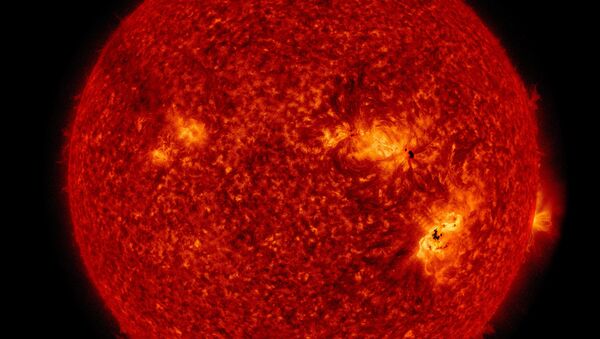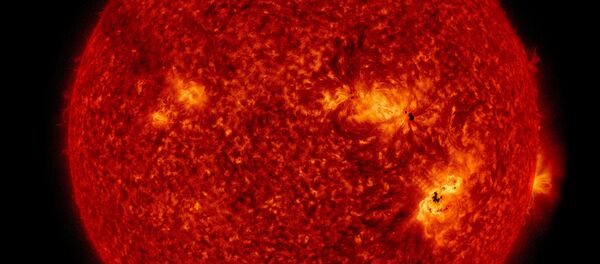MOSCOW (Sputnik) — The sun shot out another huge flare of the strongest X-class, which reached its peak at 8:00 GMT on Friday, according to a solar activity graph by the Laboratory of Solar X-ray Astronomy of Russia's Lebedev Physical Institute of the Russian Academy of Sciences (LPI RAS).
Earlier in the day, a representative of LPI RAS announced that the planet was experiencing a severe level-4 geomagnetic storm, with 5 being the worst. The storm is nearly 10 times more intense than expected.
According to the data collected by the laboratory, a series of solar flares kicked off in the beginning of this week, Initially, five minor M-class flares occurred, with an X-class flare taking place on Wednesday, followed by an extra strong X9.3-class flare.
Experts say that the string of bursts on the Sun is a natural consequence of the changes, which has happened in the solar corona over the last three days. Within the period, two large groups of sunspots accumulated an enormous amount of energy, which was emitted in a series of flares. As of today, it is still challenging to predict the exact consequences of this natural phenomenon.
Meanwhile, NASA managed to capture spectacular images of the two significant solar flares emitted earlier this week on the Sun. In spite of the intensive solar activity over the last few days, harmful radiation from a flare cannot pass through the atmospheric "shield" of the Earth, NASA's specialists say. But if the "solar storm" is powerful enough, it can affect the layers of the atmosphere where communications signals are and eventually lead to the disturbance of electronic devices and hardware odd functioning.
Two solar flares were released by the Sun this morning, one of which was the most powerful flare recorded since 2008 https://t.co/XpSiMdU159 pic.twitter.com/oYgptLJKyj
— NASA (@NASA) 6 сентября 2017 г.
The sun is surrounded by a bubble of superheated plasma called the "corona," which is constantly shifting and circulating due to the sun's magnetic field. The layers of the corona frequently twist and knot, leading to jets of energized particles escaping the sun's atmosphere and shooting off into space. These are called solar flares — and if the particles come close enough to Earth to interact with this planet's magnetic field, they can interfere with electronic devices of all kinds.
But the real danger from solar flares is that large ones are usually followed by releases of plasma as well, in a process called coronal mass ejections (CME). CMEs are the cause of solar storms that could potentially devastate a modern industrial civilization such as ours.
The strange part is that the sun is nearing its "solar minimum." The sun has a roughly 11-year cycle of solar activity as a result of the movements of its magnetic field, and the solar minimum is the period during which sunspot and solar flare activity bottom out.


